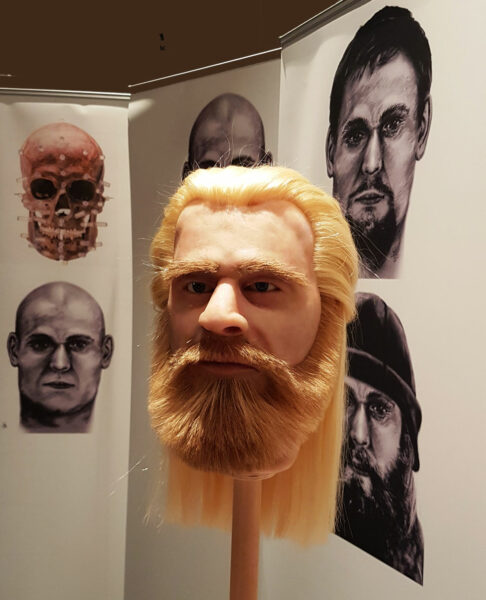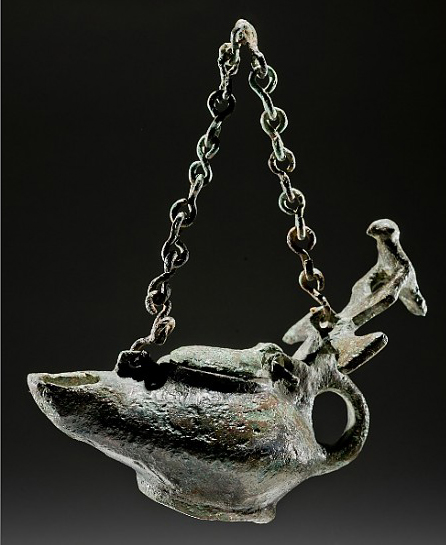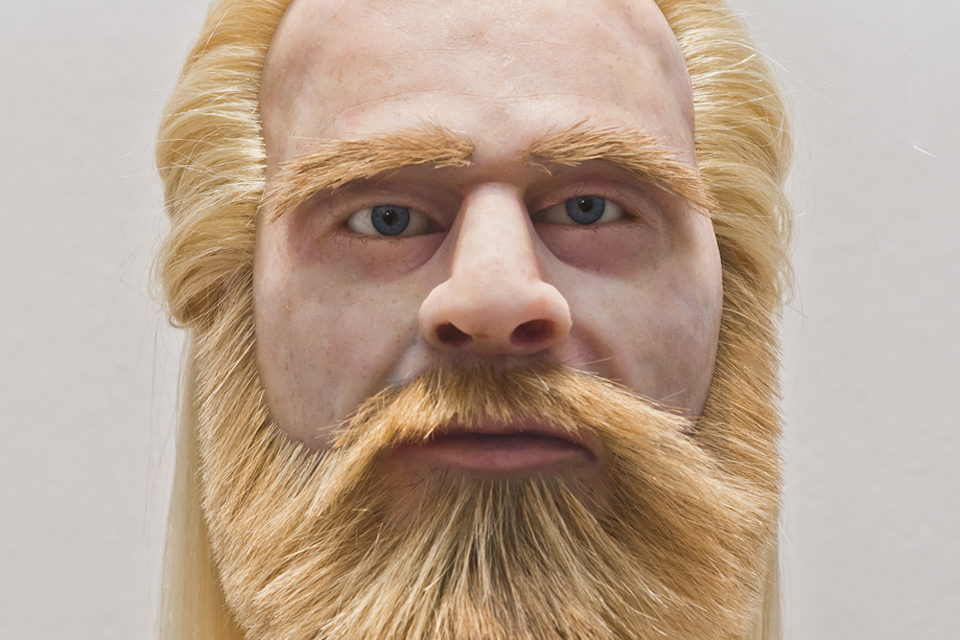In 2013 archaeologists were engaged in surveying a site near Boilstädt leading to the discovery of two impressive warrior graves from c. 600. Untouched, they have been carefully studied for several years. This spring (2019) the remains and grave-goods will be exhibited at the museum in Weimar.

Around AD 600, the two men had been carefully laid to rest c. 600. Untouched, they represented a unique opportunity for the archaeologists, when they discovered them during a routine survey in connection with nearby roadwork.
Both men had been laid to rest in a wooden chamber together with elaborate gifts. One, man, especially, garnered interest, as he became known as the Lord of Bollstädt (das Herrn von Bolstädt). These graves complement a handful of similar untouched graves from the Merovingian period.
The “Lord from Bolstädt” (No. 96) had died at the age of 35. Compared to his neighbours, he had probably stood tall, between 177–185 m high. He had been an athletic and muscular man with broad shoulders: especially, his calf muscles were well-trained and witnessed to his skills as a rider. At some time, his nose broke. Expertly set, though, it may not have left any visible marks. He seems to have suffered from eczema on his skull, perhaps caused by wearing a metal helmet for long periods at a time. The man had blue eyes and blond hair. The archaeologists have not been able to discover the cause of his death.

Also, analyses of the aDNA of the two men were carried out to discover whether they were related. This was not the case. Instead, it revealed that the Lord from Boilstedt came from Eastern Europe, while his companion in death hailed from Western Europe. The eyes of the latter were a mixture of green and brown, while his hair was dark.
In the richest grave, the one said to belong to the “Lord from Bolstädt”, the archaeologists found a Byzantine oil lamp, a Visigothic gold coin (tremissis used as obolus), a comb, a richly decorated belt as well as one full set of weapons, consisting of a lance, a spear, a seax, a spatha, a shield and a swordbelt. Also, the grave held a horse’s harness, a bridle, playing pieces of glass, a bag containing a necklace of glass pearls, a small bucket of bark closed with a silver lock, and the remains of a meal consisting of meat, eggs, and a fish. In a nearby grave, a horse and a dog were found. The grave itself had been constructed as a chamber and covered with a mound.
The second burial (No. 131) was less ostentatious. Nevertheless, it held a full set of armour, a sword-belt, another belt, riding equipment including a set of spurs, a purse with a flint and a fire-striker, tools for shaving and a comb. Also, this man had been supplied with fare for the next journey, consisting of meat and eggs. Nearby, his horse had been buried.
FEATURED PHOTO:
Bust of the Lord form Boilstädt © Foto: H. Arnold, TLDA, Weimar
SOURCE:
Der „Herr von Boilstädt“ und die archäologische Ausgrabung zur Ortsumfahrung Gotha-Sundhausen
Der „Herr von Boilstädt“ bekommt ein Gesicht.
VISIT
Das Museum für Ur- und Frühgeschichte Thüringen
READ MORE
A book about the Man from Boilstädt and the historical context of his life is currently being prepared, to be published in the series of publications issued by the Museum für Ur- und Frühgeschichte Thüringens.
SEE MORE:
